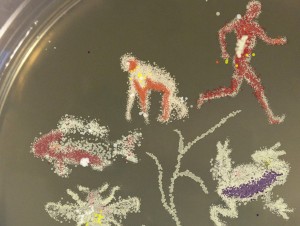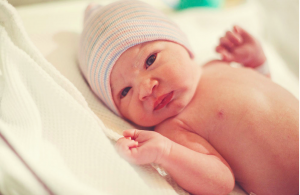Like Pig Pen of Charles Schulz’s Peanuts, you are constantly moving about in an undulating cloud of your own making. The good news? This cloud is not dirt (or not just dirt anyway), but is composed of your own (healthy!) bacteria, referred to as your microbiome. Microbiome imbalances have been implicated in cancer, obesity, inflammatory bowel disease, psoriasis, asthma, and possibly even autism.
You Are bugging me!
 The gut microbiome and its effect on human health has long been studied and is in fact the basis for several therapies, detailed in an earlier Nsight blog post here and here. However, this new study focuses on the external microbiome; the bacteria found on the skin and mucosal surfaces. The idea that bacteria live on our surfaces is not new. What is new is the finding that we emit a microbial cloud into the surrounding indoor air at a rate of millions of bacteria per hour. These emissions can be detected in the air and on surrounding surfaces. Interestingly, each person’s cloud contains an individualized composition of bacterial species, allowing for the specific identification of who had seeded the environment hours after their actual presence within the space. Think of it as an airborne ‘biome-print’. For a closer look at the experimental design and implementation, check out Science Friday’s Microbiome Spotlight.
The gut microbiome and its effect on human health has long been studied and is in fact the basis for several therapies, detailed in an earlier Nsight blog post here and here. However, this new study focuses on the external microbiome; the bacteria found on the skin and mucosal surfaces. The idea that bacteria live on our surfaces is not new. What is new is the finding that we emit a microbial cloud into the surrounding indoor air at a rate of millions of bacteria per hour. These emissions can be detected in the air and on surrounding surfaces. Interestingly, each person’s cloud contains an individualized composition of bacterial species, allowing for the specific identification of who had seeded the environment hours after their actual presence within the space. Think of it as an airborne ‘biome-print’. For a closer look at the experimental design and implementation, check out Science Friday’s Microbiome Spotlight.
Why dig up the dirt on people?
The finding that humans emit a detectable microbial cloud builds on earlier work from the Human Microbiome Project that aimed to catalog the microbiome on the skin and mucosal surfaces from a diverse set of healthy subjects. Understanding of individual variations within a healthy microbiome and shifts associated with diseases and disorders is the starting point for a new paradigm in thinking about the involvement of the microbiome in improving human health. Relevant clinical parameters will be absolutely required for successful implementation of therapies aimed at correcting microbiome-based disorders.
What do these new studies open the door to?
Future studies will allow a more accurate picture to develop of these personal microbial clouds in action in real world scenarios, such as how each person’s cloud influences the microbiome of those sharing their living, working, and even commuting spaces. Recent attention has been paid to the importance of the initial transfer of the maternal microbiome to the infant at birth. This very first inoculum can have an enormous effect on the infant’s immune system, influencing their future risk of developing conditions like asthma, food allergies, type 1 diabetes, and rheumatoid arthritis. It’s also something that infants born via cesarean section, about 1 in 3 in the United States, miss out on. Right now researchers are testing a microbe wipe to promote babies health after C-sections. And the private sector is already working on  development of treatments to give those infants born via cesarean section the same advantage of the the transfer of the maternal microbiome that those born naturally receive at birth. An example is Commense, a start-up out of Puretech. As treatments aimed at improving human health through the manipulation of the microbiome become more defined therapeutic cocktails, are proven clinically, and gain regulatory approval, be on the lookout for opportunities to commercialize what are likely to be low tech but highly effective therapeutics.
development of treatments to give those infants born via cesarean section the same advantage of the the transfer of the maternal microbiome that those born naturally receive at birth. An example is Commense, a start-up out of Puretech. As treatments aimed at improving human health through the manipulation of the microbiome become more defined therapeutic cocktails, are proven clinically, and gain regulatory approval, be on the lookout for opportunities to commercialize what are likely to be low tech but highly effective therapeutics.




